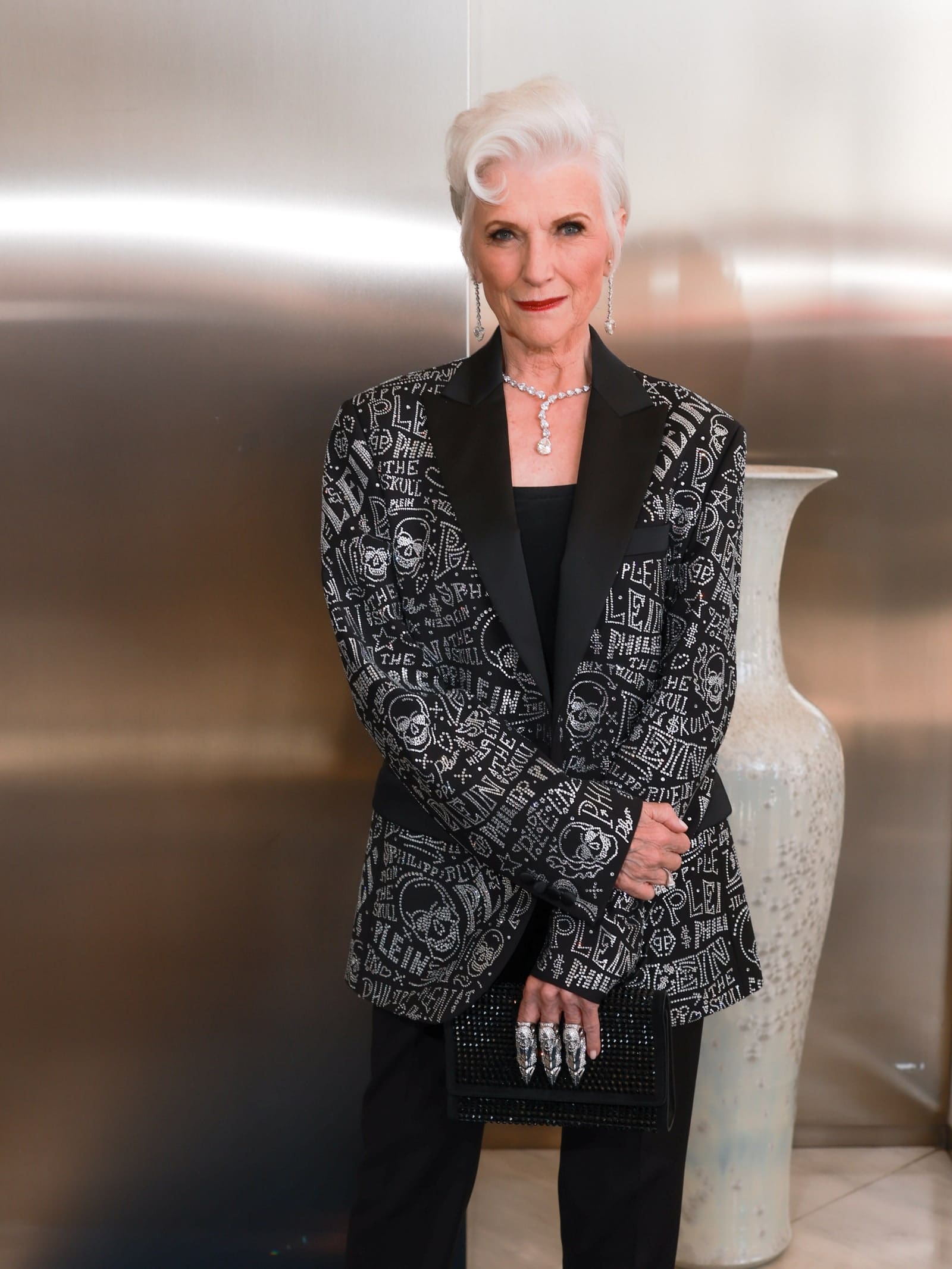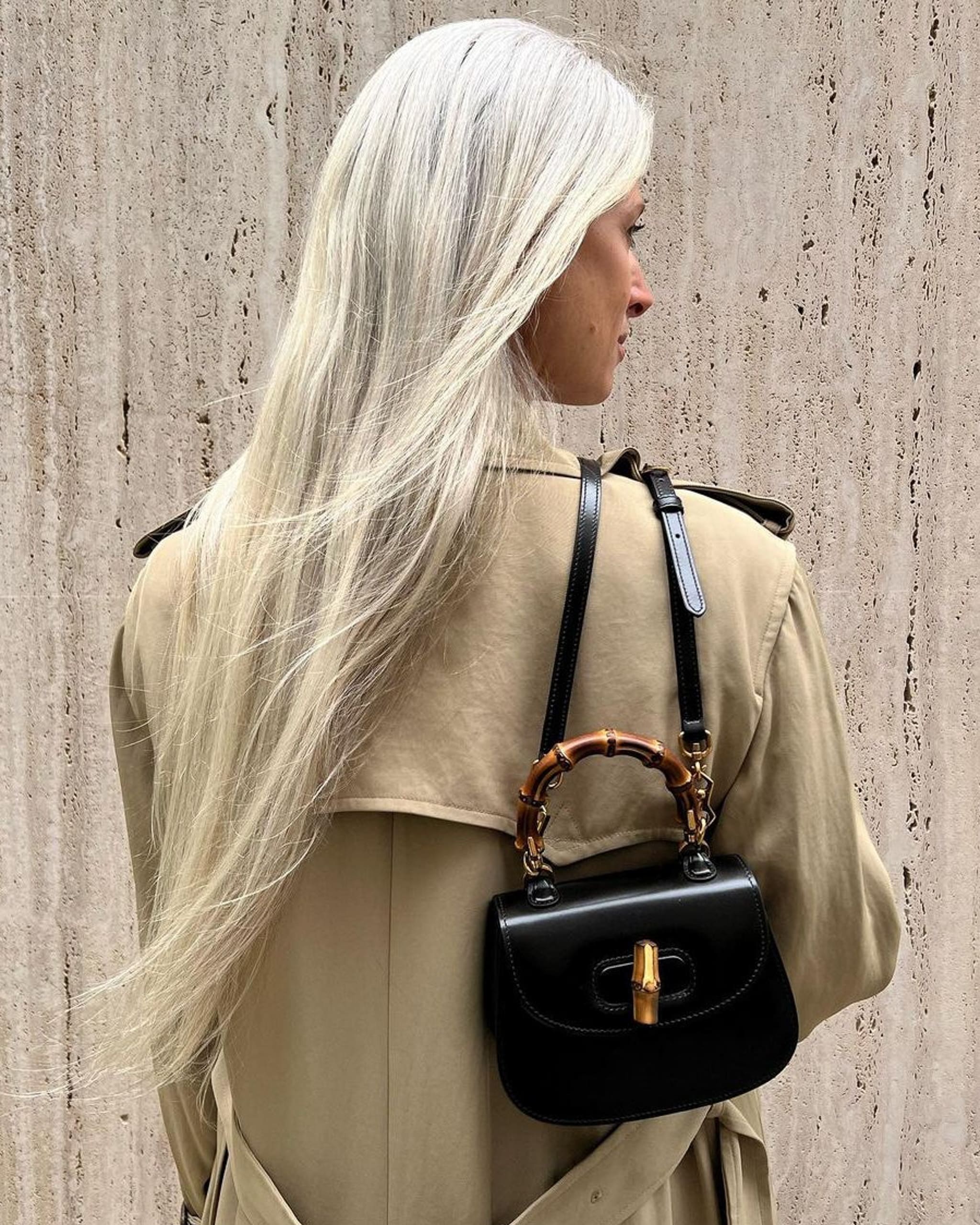“It’s crazy how beautiful women are with gray or silver hair,” says Tracey Cunningham, who encourages jumping into the look with both feet.
Celebrity hair colorist Tracey Cunningham counts everyone from Jennifer Lopez to Priyanka Chopra and Halle Berry as clients. The doyenne of hair color, she is the woman to see for natural but notable shades—and tricky transformations. Not only did she take Kim Kardashian back to brunette following her dramatic 2015 bleached-blonde dye job, she is also the woman behind Anya Taylor-Joy’s signature icy platinum. Oh, and most recently, she created Riley Keough’s fiery copper mane for her starring role in Daisy Jones & The Six.
While color is her currency, when she paid a visit to London recently, she discovered a major focus on tonal hair that’s void of color. There has been plenty of buzz about embracing our grays in recent years, largely thanks to famous women like Andie MacDowell, Helen Mirren, Kristen McMenamy, Erin O’Connor, and Sharon Stone switching to silver in style. What was once deemed aging (on one portion of the population—men, on the other hand, get called “silver foxes”), has been reclaimed by women embracing grey at every age, and looking excellent while they’re at it.

You might think that someone who makes their living as a colorist—and an excellent one at that—would be vehemently anti-gray, but Cunningham says that despite its past reputation, going gray can have more revitalizing benefits than eye cream or even Botox. “It’s crazy how beautiful women are with gray or silver hair,” she says, adding that she has a chapter devoted to the power of grey in her book, True Color.
As our complexions change with age, the natural grays, whites, and silvers that emerge are softer against the skin, making us look healthier and more vibrant, rather than pale and washed out. And while many feel they have no choice but to dye them, in many cases transitioning into our natural shade as we get older only has a positive effect. Take the grays that first grow in around the hairline: Cunningham says we should view these as a little like the “money pieces” (the bright tendrils of hair we pay colorists to add around the hairline) that frame the face. Consider those first signs of silver Mother Nature’s way of lifting and brightening the skin.

When I ask Cunningham what advice she’d give to someone considering going gray, I expect her to tell me that it’s all about artfully placed highlights to soften the growing out of roots. Instead, she advises taking a purist route: “You just need to embrace it and let it grow out,” she says. “You don’t want to bleach all of your hair and then dye it gray, it won’t look as good. I saw Kristen McMenamy at Easter one year and she had big roots—she said she was growing out her hair. A year later, she was on the cover of Vogue with gray hair, looking stunning. After that, Lady Gaga got a gray wig, and then all the young girls wanted to go grey. She started a revolution!”
While colored hair requires formulas that work to fortify and strengthen, gray hair’s biggest issue is its propensity to look dull, due to the metals and minerals that accumulate on the hair when exposed to tap water. “If you want really beautiful, bright grey, you have to try Olaplex’s Chelating Treatment to keep it vibrant.” Cunningham also swears by the treatment to lift blonde hair—she tells me a story about a time she was due to color Khloé Kardashian’s hair and chelated it in preparation, only for the pair to decide they actually didn’t need to color Khloé’s hair for another month, such was its lightening effect. She also recommends the brand’s No 4C Bond Maintenance Clarifying Shampoo to keep hair luminous, without stripping it.
This article originally appeared in British Vogue.
